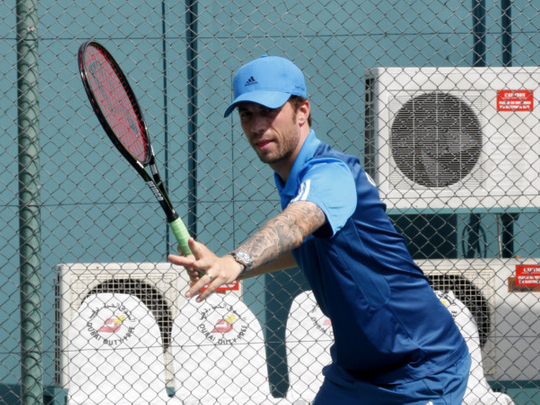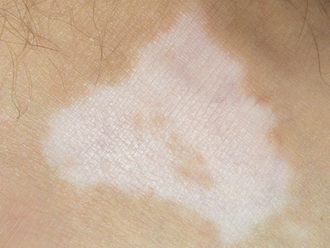
It was the mid-1980s when the tennis bug bit a teenaged me, but which was very unenthusiastically welcomed by parents because they couldn’t afford time for a dedicated activity from their busy schedules or felt I was incapable of handling an intense sport such as tennis.
On my insistence, my father did request a friend, who happened to be one of the top players of the club we subscribed to, to coach me while he practised at the club. But, refused to buy me a racquet or any other equipment, until I really started to learn.
With dreams of being the next Steffi Graf I cleaned white “sports” shoes I wore to school and picked out my best casual clothes to start my training — only to watch my coach and his friend play at the court. Fifteen minutes or so before their time finished I was offered an old heavy racquet by my coach and asked to play.
Having played a few sessions of badminton, I’d got used to the low end serve and started my tennis training with that. Although he did point out I was wrong, my coach never really taught me the right technique to serve. Subsequent — and occasional — sessions resulted in 15-20 minutes of playtime.
By the time a month ended, due to the long waits on the court, the teenager in me slowly started losing interest (the fact that my coach scared me was another contributing factor).
Today I’m not sure whether it was my lack of enthusiasm or the family’s derisive outlook or my coach’s nonchalance that my father never bought me the tennis racquet.
My love for watching the sport died slowly sometime after Monica Seles got stabbed on court. But the lure stayed buried deep inside. And when you hear words that a person of “any age, any ability, any fitness can play this sport” you feel may be there’s still hope.
“[Tennis] is an open sport where everyone can fit in,” Jon Guntley, director of tennis at Clark Francis Tennis, told tabloid! last week at the Dubai Duty Free Tennis Championships at The Aviation Club. “Any age, any ability, any fitness can play this sport, that’s the good thing about tennis. People take lessons for different reasons, may be fitness-related or to improve their technique or to become a champion. And tennis can be adapted to suit many different requirements.”
Guntley, who has been teaching with CFT for the last five years, feels, without age barriers it’s always better to teach someone who’s a tennis virgin.
“For someone who has never played [tennis], it’s easier for them to adapt because everything is new and fresh and they don’t have ‘bad habits’. You can have an adult who may have played tennis his whole life but without coaching, he may have bad habits with respect to the game which could be more difficult to undo and teach the correct way than somebody who’s never picked up a racquet before.”
Touching on important points that a novice should know, Guntley explains this much loved game. Excerpts:
What is the right age to start playing?
The ideal age to start is about four years. There are some three and half year olds who show promise, but at that age it’s crucial that concentration span is strong enough. Even a few months can make a big difference.
What kind of fitness and food regime should a player follow?
You cannot put too much weight and strength training on children because their muscles haven’t developed properly. What they should do is a lot of movement exercises. Nutrition wise, it’s important to follow a correct diet so that when they come for their physical activity, they have some energy inside them.
Does the sport have special attire?
Tennis has evolved. Only Wimbledon is now played in all white these days. What’s important is wearing the correct footwear. A lot of unexperienced people come with running shoes, which are designed to run forwards. Tennis requires a lot of lateral movement, so it is very important to have tennis shoes with no-marking soles to provide correct support around the ankle area. As for clothes, any sports attire is good to start with.
Is there a difference in the racquets used by the players?
Racquets are of different sizes, starting from 19 inches, from the top to the bottom of the handle. That is ideal for a four-year-old. Then, according to your size and age the length goes up — 19, 20, 23, 25, with a full size racquet of 27 inches. When you get to the full-sized adult racquet, which some of the older juniors can play with, and then there are different weight racquets.
Why do we see tennis players bounce on their feet, bent at the knees? Is it important?
This is taught from Day 1. This is what we call the Ready Position. This is important as it gives you the right support to return a serve or volley and face the ball with maximum acceleration. If the ready position is not right then you have little chance of returning the shot correctly.
Tell us about the different strokes used in tennis.
You have the serve, the volley, the forehand and the backhand — these are the basic shots (see glossary). Then you have the different variations of them on how to answer a shot. For a complete beginner, we get them started with these ground strokes, get them confident on the baseline and then introduce the serve and so on.
What are more popular in the UAE: grass or clay courts?
Neither grass nor clay [court] would be good for the climate we have in the UAE, purely because both are difficult to maintain. The weather is just too hot. But we have had a good bit of rain this year so it would be nice to have them here too.












